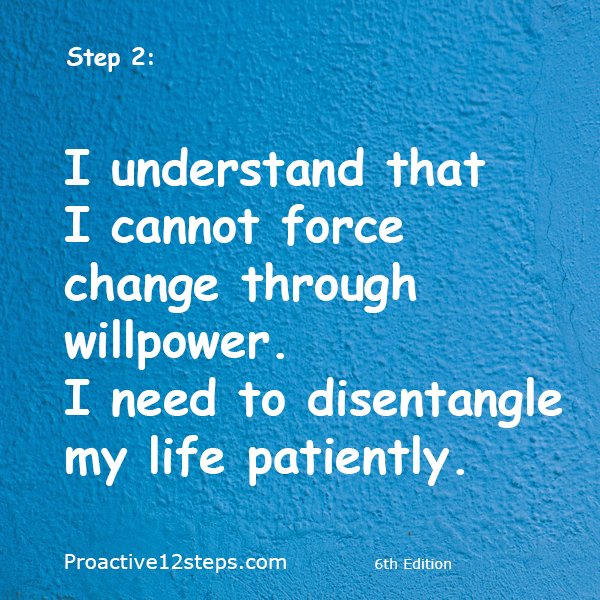
I understand that I cannot force change through willpower. I need to disentangle my life patiently.
Discussion of Step 2:
As we left Step 1, things were very bleak, but there was hope for the future. In the Twelve Steps of A.A., hope takes the form of a religious narrative. Out of the depth of despair, there is the possibility of salvation through God. This is exemplified by the song Amazing Grace: “I was lost, and now I’m found.”
Where does this leave you if you do not have that kind of religious belief? I suggest you don’t take the original Step 2 literally. Instead, pay attention to the big picture, the context in which it is written.
If the Twelve Steps were about being saved by the grace of an all-powerful God, then there would be no need for 12 steps. The instructions would just be: “Trust God, pray, and all sorts of good things will happen.”
But there are many more steps than that, and most of them have nothing to do with God. In fact, most of the steps describe a process of making changes in the way you relate to other people and to yourself.
Faith in the process
So why mention God at all if the process itself is actually one that is focused on personal change? Well, it is really hard to start such a process when you are in a state of despair.
Putting Step 2 in context, you see that its role is to give people a reason to believe that change is possible even though circumstances are daunting. The people who started A.A. were Christian. They took for granted the cultural narrative that God is all-powerful and can accomplish miracles. Relating this process to the power of God made it possible to believe in it.
We’re now several decades past the time when the Twelve Steps started. We see how millions of people have benefitted from following the Steps. You don’t need to believe in God to believe in the process of the Steps. All you need to do is to remember that it has worked for other people.
If you believe in God, by all means, take comfort in the sense that you are in the hand of a benevolent God. If you’re an atheist or an agnostic, you don’t need to feel like you have to believe in God to undertake this process. What gives you hope and faith is the very existence of the Twelve Steps. They have helped people make changes that feel so impossible that they appear to be nothing short of miraculous.
To be totally clear, the central belief of Step 2 is a belief in the process of the Twelve Steps. It has worked for others and can work for you.
What is the nature of this process?
Let’s use a metaphor for this process, what to do with a cord that is all tangled up. How do you disentangle it? If you are impatient and try to pull, all you succeed in doing is getting it even more tangled. The only way to unravel it is to go very slowly. You patiently look for ways to create an opening between strands. And, little by little, you untangle it.
This is the kind of attitude that works for changing deeply ingrained habits. You face the reality that the strands are entangled, and there is no quick and easy way to undo the mess. Then, one by one, you disentangle the various strands of your life.
The stakes are high, as we saw in Step 1. There are serious consequences for yourself and others if you don’t change. The normal human tendency is to try to force change through willpower. Instead, in Step 2, you realize that the only way to do it is to shift gears. You commit to a program that will help you slowly and patiently disentangle your life.
By the way, you now see why this program is described as both proactive (you are actively involved) and mindful (you cannot do it mindlessly, it requires your full attention).